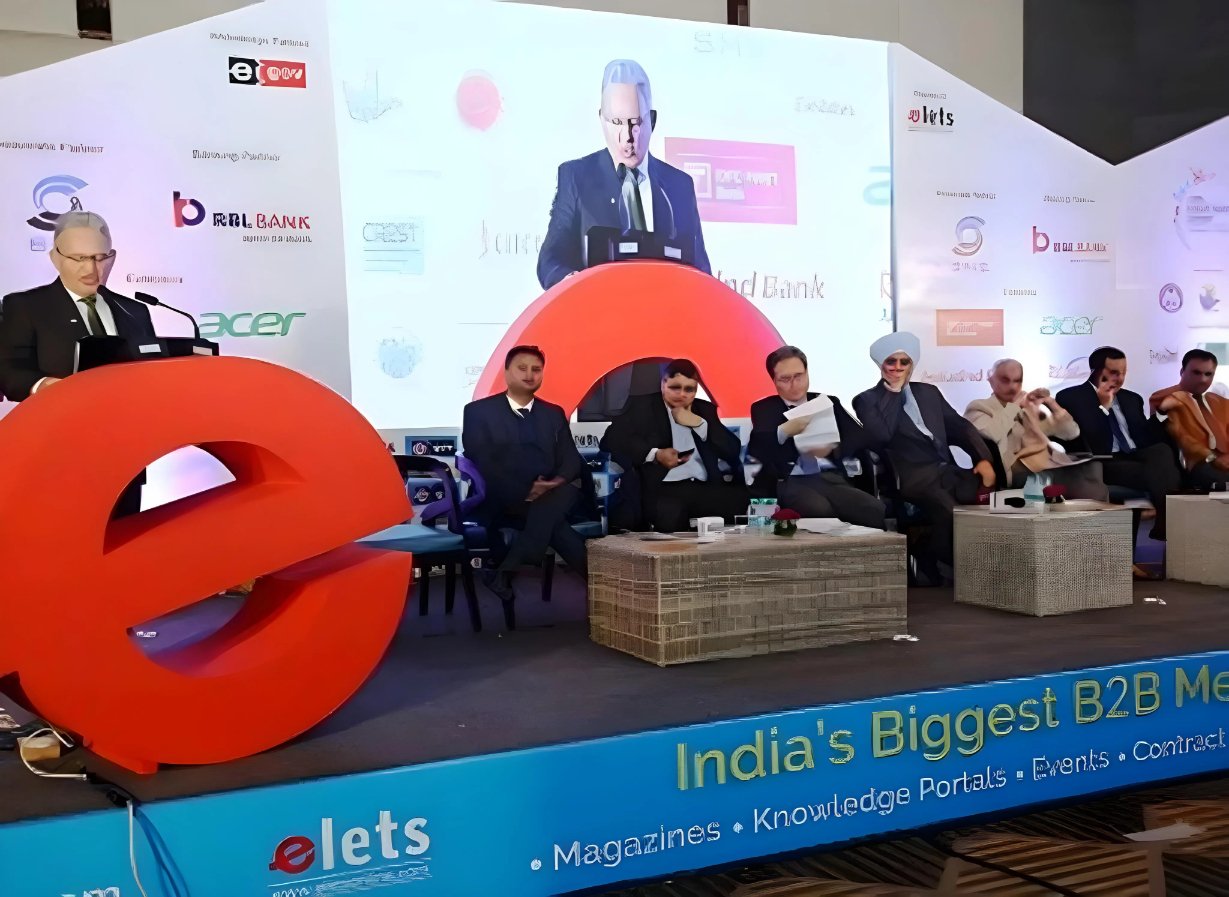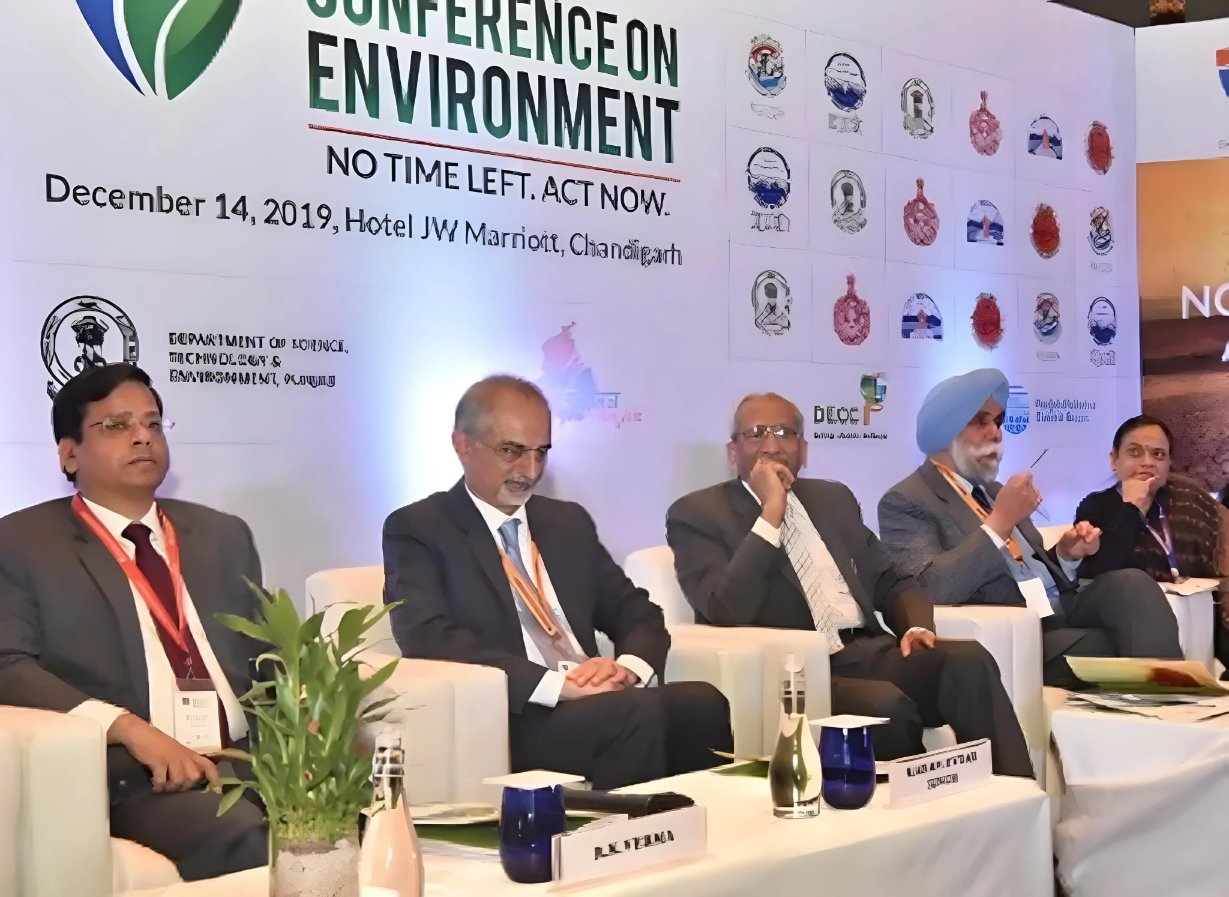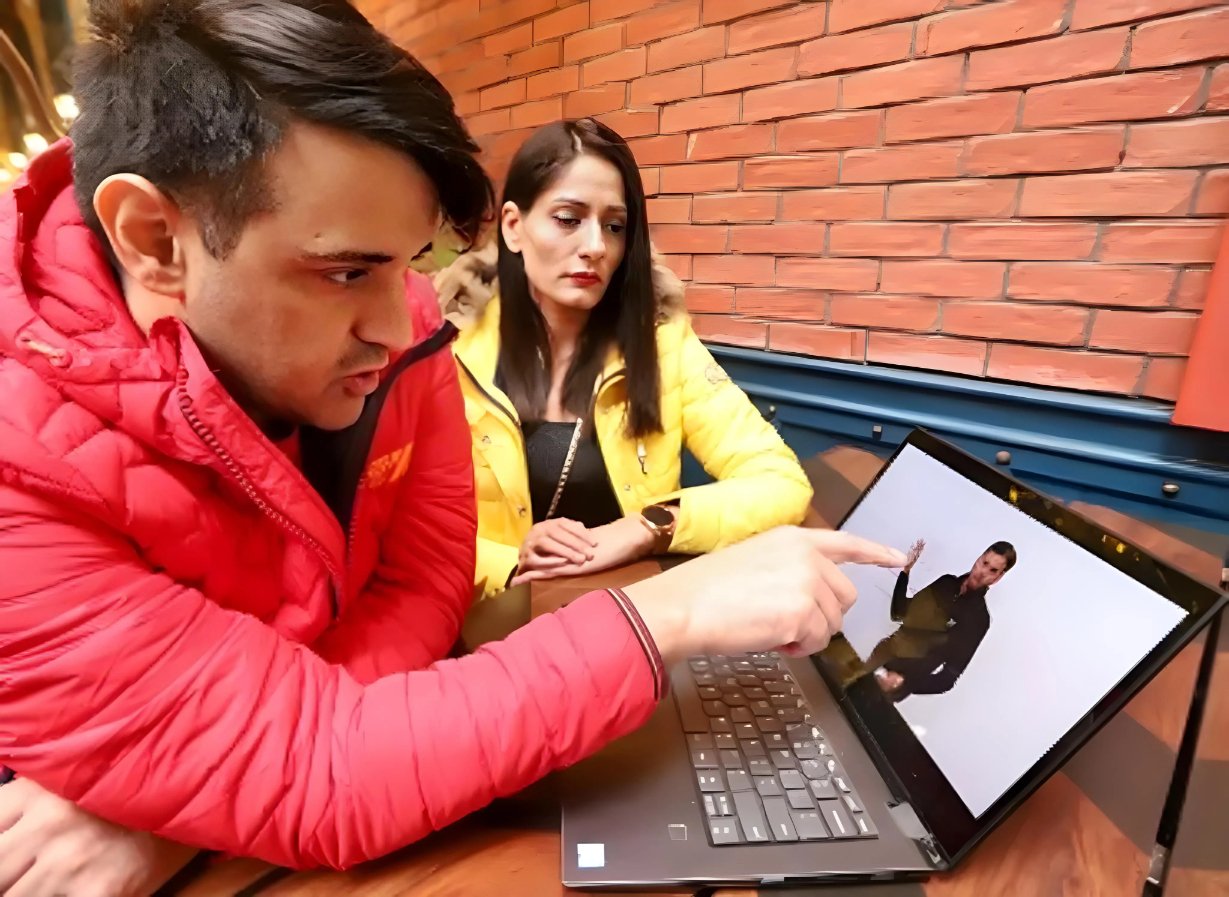Key speakers at a summit on urban transformation held in Chandigarh recently emphasised on quickly finding innovative cost effective funding and other solutions indigenously to cope up with the rapidly growing pressure on cities and towns, even as South Korea and United Kingdom offered to share their knowledge and expertise with Indian cities in the field of smart urban infrastructure and electric mobility.
In his special address on the topic “International Perspective on Global Collaborations for Urban Transformation” at the summit, organised by elets Technomedia in association with Chandigarh Municipal Corporation and Chandigarh Smart City Ltd, Shin Bongkil, Ambassador of South Korea to India, said like India, Korea was also predominantly an agrarian society. But the Korean War (1950-53) led to rapid industrialisation and urbanisation, and today Korea is one of the world’s most urbanized societies, with 92 per cent of its people living in cities.
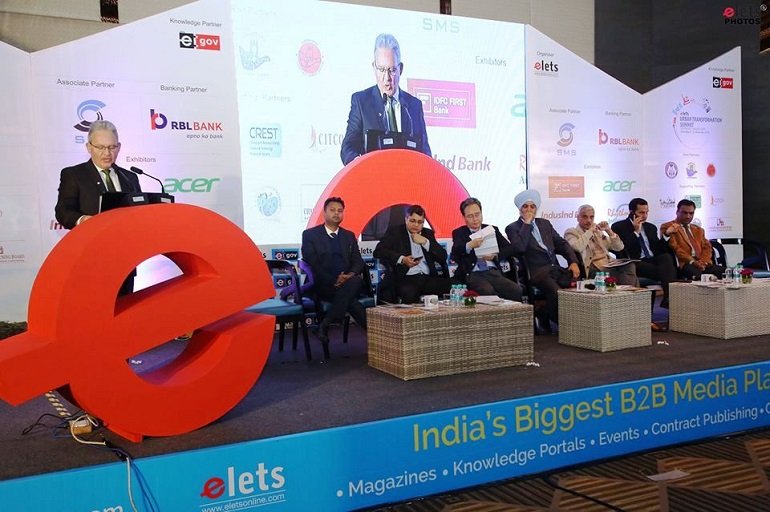
Photos By : Life In Chandigarh
Sharing the experiences of highly advanced Korean capital city of Seoul and its smartest city Songdo, Ambassador Bongkil said Seoul, because of its technological advancements, has been enjoying the status of world’s best e-government city seven times consecutively. Moving forward, Seoul Metropolitan Government is executing an ambitious plan to turn the capital city into the most advanced city in the world through the use of Big Data, ICT, Block chain, IoT and other emerging technologies of Fourth Industrial Revolution, he added.
Songdo city, built on a 600-hectare parcel of artificial land dredged from the Yellow Sea near Seoul’s Incheon airport, has a control centre which uses an extensive network of CCTV cameras to monitor the cities’ traffic system, access control, power distribution, water supply, fire protection and dispatch emergency response based on the situation. The city collects and segregates its garbage automatically, sucked out of apartments by a vacuum chute and collected at the sorting facility. There are dedicated bike and bicycle paths, walkways, LED street-lighting and charging stations for electric vehicles across the city, the Korean Ambassador informed.
With another two smart cities in Busan and Sejong being developed as ‘Cities of Future’, to be enabled and led by the latest and most advanced technologies, Ambassador Bongkil asserted that Indian cities can gain immensely from Korea’s invaluable experience in urban infrastructure development, urban renewal, urban mobility, waste management and building futuristic smart cities.
1 Bn US$ Budget For Indian Cities
Advertisement

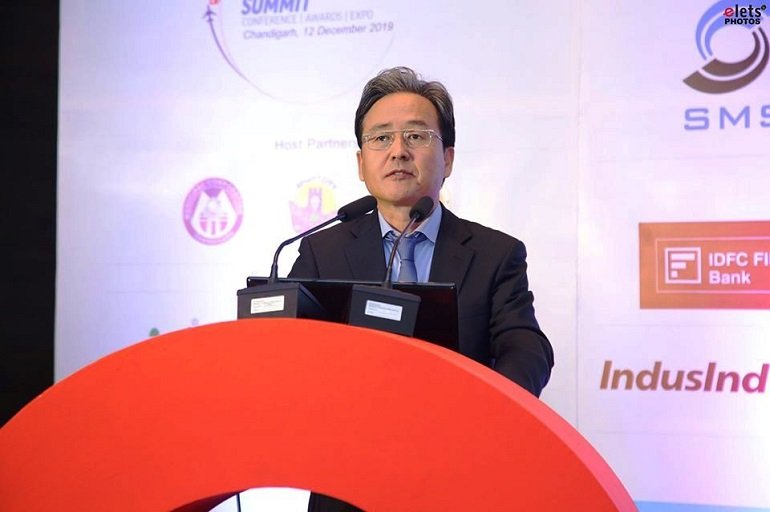
Later, talking to LifeInChandigarh.com, the Korean Envoy to India, shared that the Korean Government had set aside a budget of one Bn US $ to provide financial, technical and other required assistance to Indian cities aspiring to turn into smart cities. A redevelopment project in Mumbai was among the first to be assisted from this budget, he said.
Uk’s Zero Emission Vehicle Push
Speaking on “Urban Transformation through Global Collaboration from a British perspective”, Andrew Ayre, British Deputy High Commissioner to India in Chandigarh, informed the gathering that it was his government’s objective to put UK at the forefront of design and manufacture of zero emission vehicles, and for all new cars and vans to be effectively zero emission by 2040. This would mean an end to the sale of new conventional petrol and diesel vehicles. By 2050 almost every vehicle on British roads would be zero emission, he said.
In pursuit of this, UK is making grants available for plug in cars, vans, lorries, buses, taxis and motorcycles, and schemes to support charge point infrastructure at homes and workplaces and on residential streets. “Along with the measures in our strategy, this adds up to one of the most comprehensive support packages in the world for the transition to zero emission vehicles,” Ayre added.
Claiming that in 2018 UK emerged as the second largest market for Ultra Low Emission Vehicles in the European Union (EU) and is a global leader in their development and manufacture, with 1 in 5 battery electric cars sold in Europe being made in the UK, he said there is a great scope for working closely with Indian Government and businesses, think tanks, and stakeholders from states and cities on policy, technology, forging new partnerships in charging infrastructure, battery technology development, grid management and skills, etc.
Low Cost Options In Metro Projects
Speaking at the summit, Janardan Prasad, Director (Urban Transport), Union Ministry of Housing & Urban Affairs, said urban development being a state subject, smart solutions especially in urban mobility could prove game changers for states, and the central government was committed to provide financial support and guidance, wherever required.
Right now strengthening public transport is the top priority of the government and a large number of options are available to state governments to deploy rapid road and rail transit systems for their cities. There are also less expensive, slow speed and low capacity alternatives to the existing metro rail systems like ‘Metrolite’ and ‘MetroNeo’ (rubber tyre rail system) available which can be deployed in smaller cities and towns with lower ridership volumes, he added.
Multimodal Urban Mobility System Required
Director General of Chandigarh Police Sanjay Baniwal called for creating a seamless multimodal urban mobility system in Chandigarh, considering the safety and security of all citizens, especially women, whose travel pattern was very different from men because of the multiplicity of responsibilities from workplace to family. This was all the more important since Chandigarh had a large daily influx of floating population which comes to work from adjoining states, making crimes and criminals in many cases almost anonymous.
Claiming that the advent of the 112 integrated number for fire, ambulance and police related emergencies, digitalised patrolling system and the eSaathi app had substantially cut down on response times to emergencies and brought several services, including sharing of problems, feedback and suggestions, tenant, servant and employee verification requests, and character certificate requests, at doorstep of citizens, he said now it for the people to play their part and use these facilities without any fear or inhibitions. He also appealed to the public to demand more such smart services from the police “and keep us on our toes”.
Finances Biggest Challenge Of Municipalities
.jpg)
Sharing his experience of the Swachh Bharat campaign and Smart City concept during his tenure as Municipal Commissioner of Bhopal city in Madhya Pradesh from 2014 to 2016, Tejaswi Naik, current District Magistrate and Collector of Betul district, identified finances as the biggest challenge before municipalities. Since devolution of funds from the state governments to the municipalities were not guaranteed under the constitution, they had to find innovative ways of generating more funds and devising cost-effective methods of executing services and projects.
“The solutions have to be innovative and indigenous and not cut and paste from experiences elsewhere. The problems of most cities are peculiar to themselves and hence solutions also need to be suited to the local conditions,” he emphasised.
Dissecting the success story of Bhopal city in the Swachhta and smart city rankings, he said the key element was taking all stakeholders on board, including people who so far did not have much say in planning and execution. So we elicited suggestions from a cross section of society – engineering students, CII, teachers, ‘thela’ vendors, etc – and incorporated them to make our plans inclusive and participatory.
In innovation, he gave the example of rebranding the public toilets for women as ‘sheLounges’ with additional facilities of sitting space, private area, running FM radio and drinking water, which were lacking in Sulabh ‘shauchalayas’. Since 30-40% of the municipality’s funds were consumed in fuel costs to run hundreds of municipal cleanliness vehicles and other energy costs, the centralised petrol pump concept was decentralised, and wherever possible, under the prevailing circumstances, traditional energy sources were replaced with solar energy, he added.
Le Corbusier’s Vision Decoded
One of the key speakers, Kumar Saurabh, Deputy Commissioner of Faridkot, shared his insights into Le Corbusier and his philosophically-inspired planning of Chandigarh. Describing Le Corbusier as a philosopher first and architect later, the Punjab bureaucrat said the Swiss-French architect wanted Chandigarh to be a radiant city.
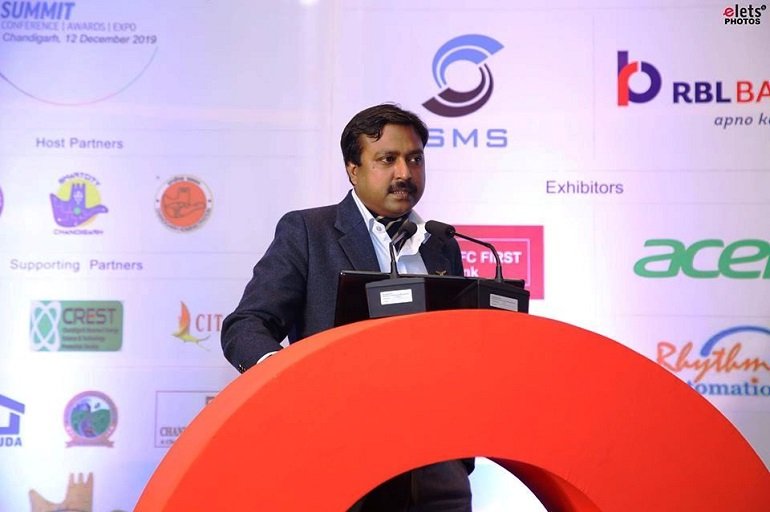
Kumar pointed out that the gridiron plan of the new city of Chandigarh was designed with aesthetics in mind and a maximum population of 5 lakhs. In such a plan every intersection has 16 conflict points, and with increased congestion resulting from population growing beyond 12 lakhs, the number of minor accidents being witnessed in Chandigarh is very high.
The reorganisation of Punjab in 1966, resulting in creation of Haryana and Himachal Pradesh, also led to massive violations of the Chandigarh Periphery Control Act, which mandated no construction in a 16 km zone around the city, and the vision of Le Corbusier and the pristine surroundings of the city were lost. With the emergence of Mohali, Panchkula, Zirakpur and other settlements, a total of 25,000 violations have been reported in the periphery of Chandigarh, Kumar Saurabh informed.
He also highlighted that the concentration of all then existing and new government departments, corporations, commissions of both Punjab and Haryana also added to congestion on the city roads with huge rush of people trooping in from across the two states to get their government related work done.
Kumar explained that it was not that Corbusier did not want the city to grow, but his parameters of growth were different. In due course, when the city were to reach its peak population (5 lakhs), he would have visualised creating garden cities, the brainchild of British architect Ebenezer Howard, at a distance from each other and outside the 16 km periphery of the central city. While the peripheral cities were themselves to be garden cities, the distance between them were to be maintained as countryside with only agriculture and allied activities being permitted there as in Chandigarh’s periphery, he added.
He felt that there was still time to make amends for the blatant violations happening all around Chandigarh by creating an institutional mechanism for coordinated and planned development of the Chandigarh tricity area keeping in mind the philosophy of the legendry architect.
UT Chief Engineer Calls Corbusier’s ‘Blunder’
The next speaker, UT Chief Engineer and Special Secretary Engineering Mukesh Anand, while concurring with Kumar that Corbusier was a legend no doubt, however, at least thrice during his address called the Swiss-French architect’s decision to finish the buildings in the Capitol Complex with bare concrete as a “blunder”. It may have been suitable for moderate climates, but with Chandigarh experiencing extreme climatic conditions in summers, winters and rainy season, the concrete was bound to develop cracks and start disintegrating, he asserted.

He compared Corbusier’s concrete buildings to the ageless and timeless buildings built during the Mughal and British eras like the Taj Mahal, which was covered with white marble stone, and the Red Fort and similar other buildings covered in red sand stone.
He claimed that to restore the six to seven decades old buildings in the Capitol Complex of Chandigarh, and infuse fresh life in them, was a herculean task accomplished by his team which worked with passion. He expressed apprehensions about the future of these buildings, arguing that future engineers of UT Chandigarh may not display the same passion in maintaining them in a shape fit for the world heritage status bestowed on the Capitol Complex.
Chandigarh’s Smart City Initiatives
Earlier welcoming the delegates and participants, Chandigarh Municipal Commissioner and Chandigarh Smart City CEO Kamal Kishore Yadav spelled out Chandigarh city’s own initiatives to provide its citizens superior services like 24X7 water supply and upgradation of its existing five sewerage treatment plants to latest standards and adding another new one.
An Integrated Command and Control Centre (ICCC) is also being set up to support all services being provided in Chandigarh by the UT Administration and the Municipal Corporation, which would include a network of surveillance cameras, advanced traffic lighting systems and digital platforms for dealing with emergencies and redressal of citizens’ grievances. Chandigarh has tied up with Bharat Electronics Limited for the ICCC, Yadav informed.
He said a single mobile app is also being readied to bring all services being provided in Chandigarh to the doorstep of the citizens. A first batch of services will hopefully be available to the citizens on this app by coming March, he added.
With an aim to make the city sustainable, the network of cycle tracks was being strengthened, public bicycle sharing was being introduced, electric vehicles were being added to the bus fleet of the Chandigarh Transport Undertaking, green buildings were being constructed by the Chandigarh Housing Board and the Engineering Department of the UT Administration and all buildings of the UT Administration and Municipal Corporation were getting solar panels to maximise solar energy use, Yadav shared.
He said among other sub themes, there was an increased focus on conserving the city’s heritage, renovating, beautifying and redesigning Sector 17 City Centre and developing new commercial areas in PPP mode.
LifeInChandigarh.com by APR Media House is an enjoyable digital reading startup, which keeps you abreast of the latest meaningful happenings of interest to large sections of folks in Chandigarh tricity, and expats from the region. It has been promoted by a public spirited senior journalist and media consultant with a view to encourage good quality and healthy journalism, a dire need of the times.
To keep in touch, drop an email or call :
kochhar.apr@gmail.com
9815617676

